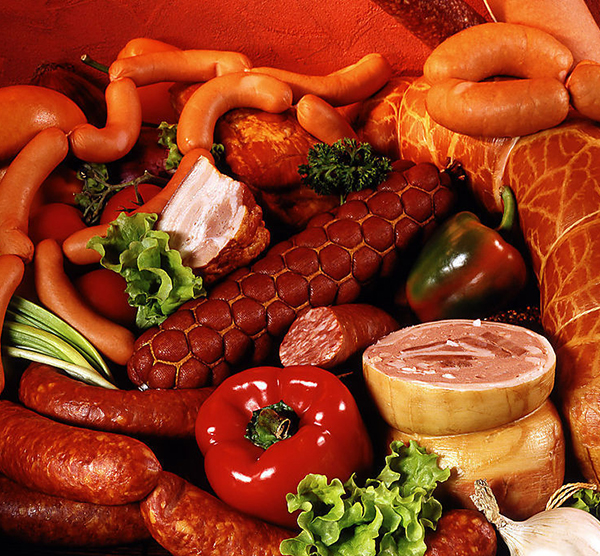
GUANGDONG KELONG BIOTECHNOLOGY CO., LTD.
Add: No.5-17 and No.5-32, South area of Qibao Industry and Trade, Huicheng, Xinhui, Jiangmen, Guangdong, China
Tel:+86-750-6978788
Fax:+86-750-6978868
Wechat: 13828063050
Website: http://svabrs.com
Email: export@kelongbio.com
marketing@kelongbio.com
Monascus pigment is derived from microorganisms and is a natural pigment produced by fermentation of Monascus. Monascus pigment consists of six basic pigments such as erythema, monascus, red yeast, monascus, melamine, and monascus. Monascus pigment is red or dark red liquid, powder paste, slightly odorous, melting point about 60 ° C, soluble in ethanol, ether, glacial acetic acid, insoluble in water, glycerin, it can be considered stable to pH, heat resistance Strong (100 ° C or more), light resistance, almost independent of the oxidant and reducing agent, good dyeability to protein, once colored, not washed after washing.

Monascus pigment has good coloring performance, can impart unique color and flavor to meat products, and red yeast pigment has strong antibacterial effect. The antibacterial test results of Japanese Endo's cultivar showed that Monascus can produce active substances with bactericidal or bacteriostatic action during the growth and metabolism process, and the test proves that some of the antibacterial active substances are pigment components. As a natural pigment, Monascus pigment is used in meat products and can partially replace the coloring agent nitrite in meat products. The German Meat Research Center has studied and discussed this. After adding red yeast to the cured products, the amount of nitrite can be reduced by 60%, while its sensory properties and storability are not affected. If the nitrite dosage is further reduced, the product flavor is slightly different from the original product. A product that adds monascus pigment and reduces the amount of nitrite by 60%, not only has uniform color, but also has much better color stability than the original product. Li Kaixiong and others studied the effect of the addition of red yeast rice pigment on the color of ham meat. The study found that the use of red yeast rice pigment not only can increase the redness value of meat products, but also can greatly reduce the dosage of NaNO 2, the meat products are safer and the color is more satisfactory. The study found that the application effect of monascus red pigment in the replacement of sodium nitrite in bacon, the results show that red yeast red pigment can be added to the bacon in the form of injection, the amount added is 0.001% of the meat weight. At the time of injection, it is required to increase the injection point, reduce the injection amount per point, and make the injection uniform. From the perspective of color, moisture content and texture, it can reach a level similar to sodium nitrite. The attempt of bacon non-nitrogen coloring agent is basically feasible.
Since Monascus pigment has good coloring property and strong bacteriostatic action, it can be used as a coloring agent for meat products instead of nitrite, and has been widely used in meat products. The coloring principle of Monascus pigment is completely different from that of nitrite: nitrite forms nitroso myoglobin with myoglobin, while Monascus pigment is directly stained. Both can be unique to meat products. Meat red. And flavor, inhibit the growth of harmful microorganisms, extend the shelf life, but the application safety of Monascus pigment is higher. Adding Monascus pigment to the pickled products can completely reduce the amount of nitrite by 60%, while its sensory properties and storability are not affected, and the color stability is far superior to the original product.
Application in condiments:
Saccharification and flavoring (for soy sauce) is a compound of Monascus spp. prepared by using red yeast as the starting species. The use of saccharification and flavoring in soy sauce brewing can significantly improve the utilization rate of raw nitrogen and the yield of soy sauce. At the same time, the soy sauce is bright and rosy, the fragrance is obvious, fresh and sweet, and the quality is better than ordinary craft soy sauce.
The red yeast pigment powder was directly added to the sauce to participate in the fermentation. The study found that the red index of the soy sauce was significantly improved and the flavor of the soy sauce was improved.
Application in alcohol:
Danxi Hongqu Liquor is produced by pressure filtration process, which retains the crude protein, vinegar, minerals and a small amount of aldehydes, esters and other substances in the fermentation process. It has rich aroma, good taste, sweet flavor, unique flavor and rich nutrition. Features. In addition, there are red koji wines such as Lu Gonghong, Yongchun, and Jifeng Mountain.
Application in pickled vegetables:
In traditional production, soy sauce is often used as a coloring agent to process pickles, which makes the color of the pickles more attractive. Monascus pigment can be used as an added pigment in pickled vegetables and penetrates into the inside of vegetables through physical adsorption. During the curing process of vegetable cells, the cell membrane becomes a fully permeable membrane, and the vegetable cells can absorb the pigment in other excipients and change the original color.
Application in the production of noodle products:
The application of Monascus pigment in the production of noodle products, such as the production of red yeast biscuits, red yeast bread, cakes, red curved strips and the like.
In the production of bread, when the red yeast water extract is added, the difference in the amount of the red yeast bread has little effect on the color, aroma, taste and mouthfeel of the red yeast bread, but the color is deepened as the amount of addition increases. red. Compared with the direct addition of red yeast powder, all aspects have been greatly improved, especially in terms of fragrance, which is more fresh and unique than bread made without red yeast extract.